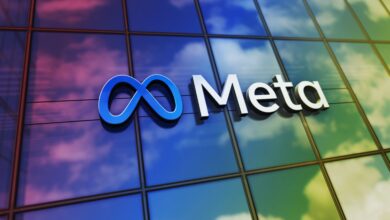
By Fadi Kanafani, Managing Director – Middle East at NetApp
“Digital first” as new business paradigm: While IT teams and IT leaders are historically called on to drive digitization and increase value, the roles will be reversed in the post-pandemic world. Strategic decision making starts with digital experience and digital transformation since they are now deeply connected to the successful operation of any company. We see this for example in business analytics, where the analysis of user experience journeys or customer experience journeys become a crucial information source for strategic decisions. Another example is increasing convergence between the online and offline world, which results in digital twin concepts being adopted beyond production, and any process being tested virtually before being considered for rollout.
Cyber security and resiliency: The pandemic months have triggered a rapid increase in ransomware attacks as more and more people worked remotely. Coincidentally, this opened up a multitude of new infection vectors. Instead, enterprises will rely on AI-based prevention across their whole domain and stringent zero trust policies. Rather than preventing IT attacks from happening, this approach minimizes their impact. Once an infection happens, it is discovered almost instantaneously: Infected areas are cordoned off and infected files replaced in almost real-time.
Sustained impact of the pandemic – cloud acceleration and the supply chain: The global supply chain has been brought close to its braking point by the COVID-19 pandemic and its impact on air, sea, and land travel. We predict that cloud adoption will accelerate faster as the supply chain constraints drive buyers to find alternatives to purchasing traditional on-premise infrastructure to meet demands. At the same time, optimization of production lines and business processes can help the system to become more robust in the future. Marrying IT and Operational Technology (OT), for example through digital twin concepts and technology such as IIoT and analytics, has virtually limitless potential. Companies that have done their homework in the past, e.g. by building out flexible Industry 4.0 production facilities, will be able to stay healthy much more easily. The workforce is going through a major change cycle, also triggered and sustained by the pandemic. Hybrid working environments are the expectation of employees moving forward. The ability to work anywhere will increase the digital capabilities businesses must provide to their staff. Controversially, the pandemic also shone the light on labor shortages surfacing quickly and unexpectedly. This will be both a challenge and opportunity for high-skill sectors like the IT industry. On the one hand, there is bound to be fierce competition for skilled personnel; on the other hand, IT itself can deliver technologies that remedy the labor gap, such as low code, no code and AI software development.
The constant simplification of public services access and the services in general will drive broad buy in for digitization. People are also going to be more comfortable with providing their data because they have experienced the positive impact of virtualized service delivery.
Productized AI: In 2022, artificial intelligence (AI) starts to permeate all industries. We will see it used in agriculture, food production, fast-food chains and the entertainment and hospitality sector. Agriculture and the food industry, for example, will use it for packing and processing, while other sectors gain most from general automation and the simplification of their processes. Let’s also talk about the “how.” Managed services become a primary delivery mode for AI as CSPs double down on “GPU as a service”’-type offerings. This is an important facilitator: As more industries use AI to stay competitive and innovate, there needs to be a solid technology foundation that can scale accordingly, and AI users need to move their AI projects from standalone (siloed) infrastructure onto shared, virtualized, production environments. Another driver is “Tiny Machine Learning.” Experts are forecasting a massive increase in AI at the edge, down to very low cost, extremely resource constrained edge devices. Think sensors rather than compute devices. This is another generation of devices that feed the ever-growing edge-core-cloud data pipeline, which industries need to access and leverage to differentiate themselves. And, finally, the macro perspective on AI and machine learning becomes clearer. Countries and governments are guaranteed to invest in AI and ML capabilities to accelerate economic transformation and compete on a global basis.
Data trends: There are a number of technology sub-trends that drive change and innovation. One is Analytics & Optimization of digital services. E.g., Finops results are much easier to come by as more automation and smarter applications take hold. This results in increases ROI from cloud investments throughout the public and private sector.
Another trend concerns production environments. There is a clear move away from applications as companies deliver their services through containerized solutions and microservices.
Thirdly, data sharing regimes are important prerequisite for building a workable data economy on the international stage. GAIA-X sparked an important discussion about digital sovereignty and the contributions needed to establish a secure data exchange infrastructure. In the near-term, I don’t think this results in a sovereign “EU Cloud.” However, we will see more unity about European norms, and more adherence to them from outside Europe.
Lastly, specifically in data storage, NAS and SAN continue to be the technologies of choice to underpin digital innovation. Writeable storge media can still be made more efficient.
Quantum computing: Quantum computing is expected to re-accelerate the performance cycle postulated by Moore’s law, and all major IT players are invested. Early use cases are expected to be delivered as a service but will not come into fruition for some time. However, manufacturers in different branches of IT will be more vocal about their quantum computing strategy in 2022 – for example security providers, hyperscalers, storage companies, and GSIs/global advisors. These manufacturers will also theorize how they can deliver quantum computing innovation as a service for their customers and overcome branch-specific limitations, e.g. building a data pipeline into the quantum computing cloud.
Sustainability – ESG becomes a competitive advantage: Green topics are on the rise, as demonstrated by the 2021 Climate Change Conference, the US infrastructure deal, or the traffic light coalition coming to power in Germany. We predict that businesses will head in the same direction. This is partly due to regulatory pressure, for example to lower carbon dioxide emissions. But enterprises will also become intrinsically motivated to deliver green innovation.
One are to look at is employee experience hybrid models, which basically allow companies to recruit talent everywhere, reduce office footprint, and significantly cut work travel.
Another area concerns production processes, which can be made more environmentally-friendly with the help of IT. More automation and optimization, flexible production, testing and planning in software, are all things that reduce wastage. Net Zero targets will become a priority for businesses in 2022, and they are impacting corporate decision-making already now. This will result in companies examining not just their own actions but their supply chain, digital and non-digital, as they strive to deliver net zero (carbon emissions) as quickly as possible.




